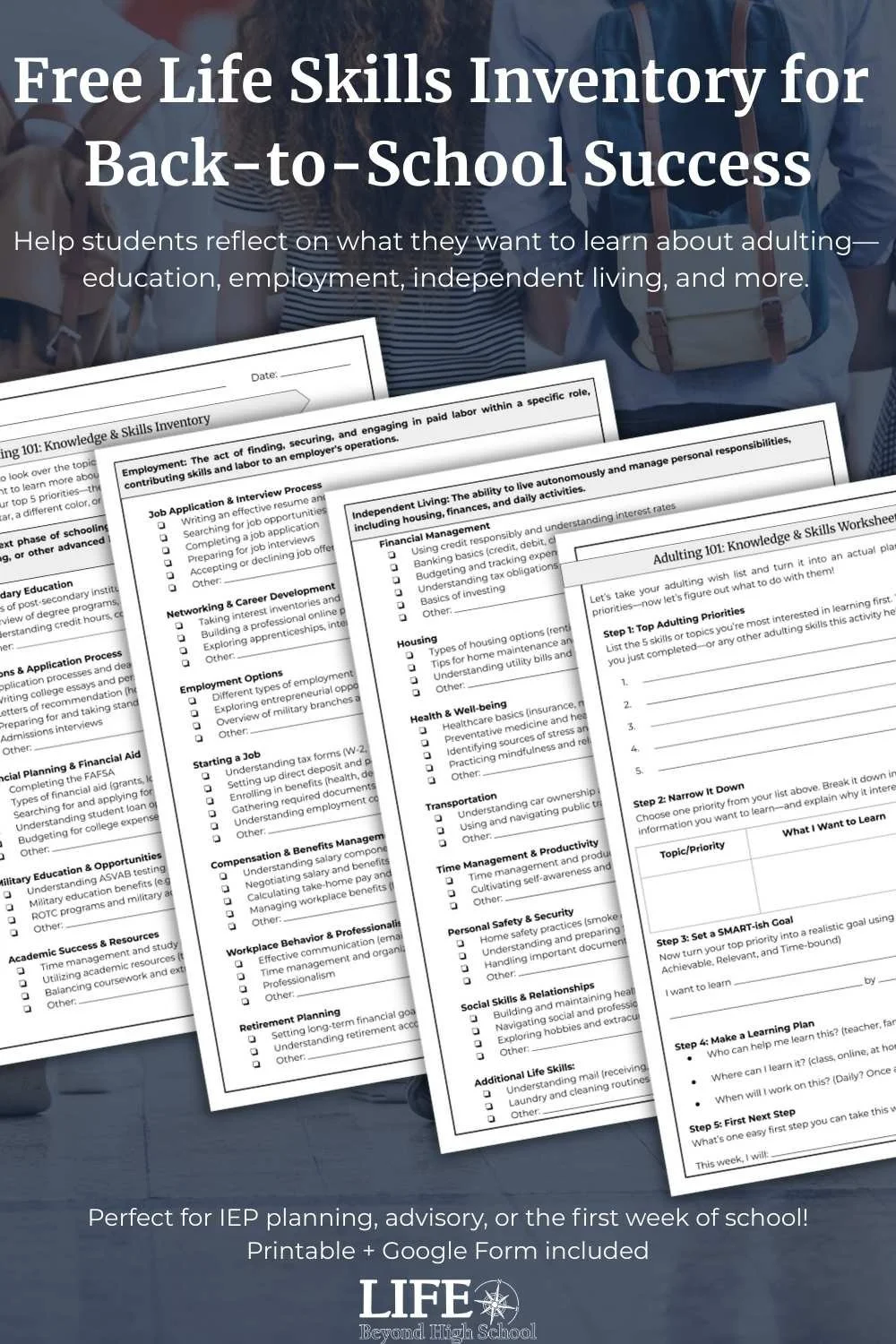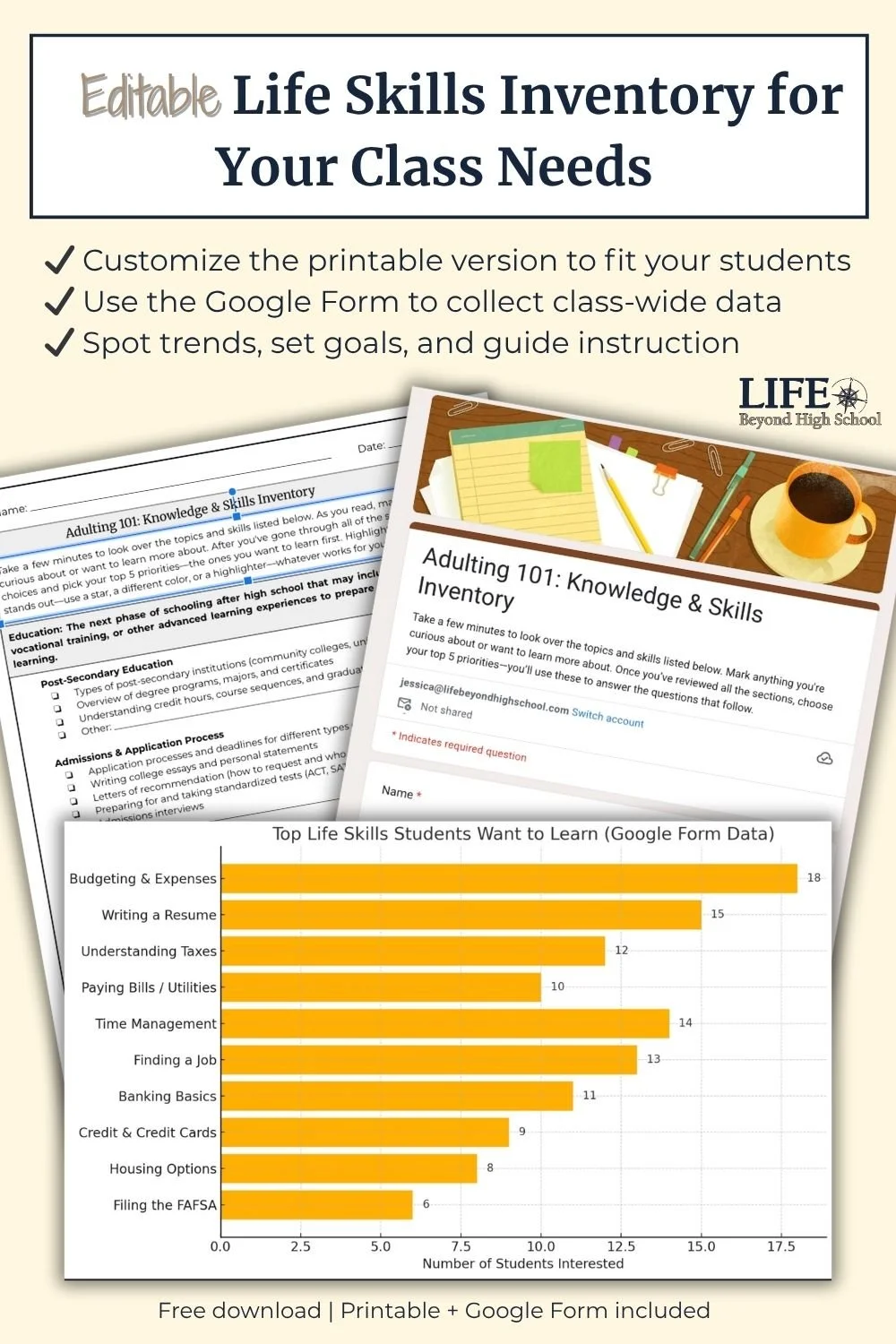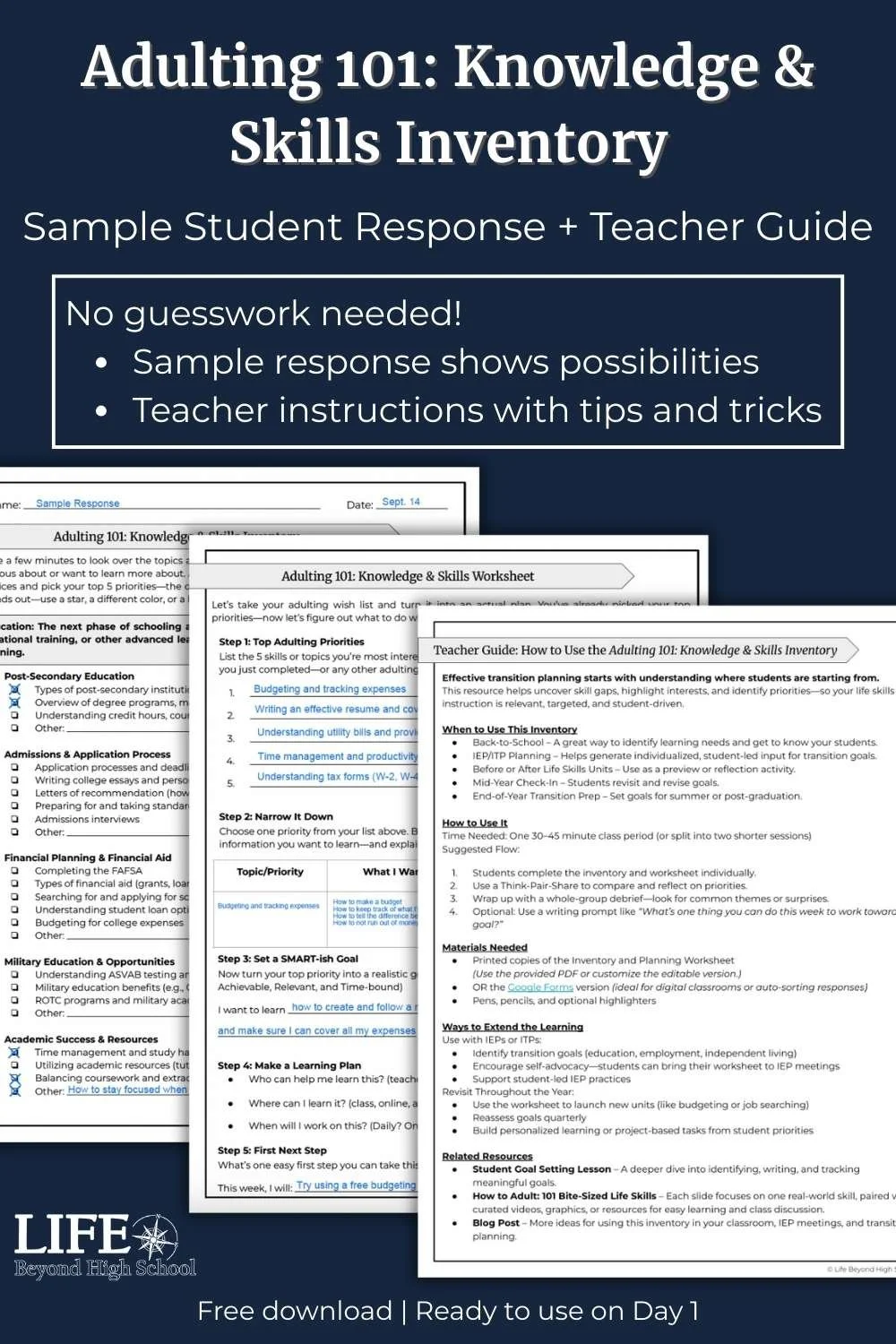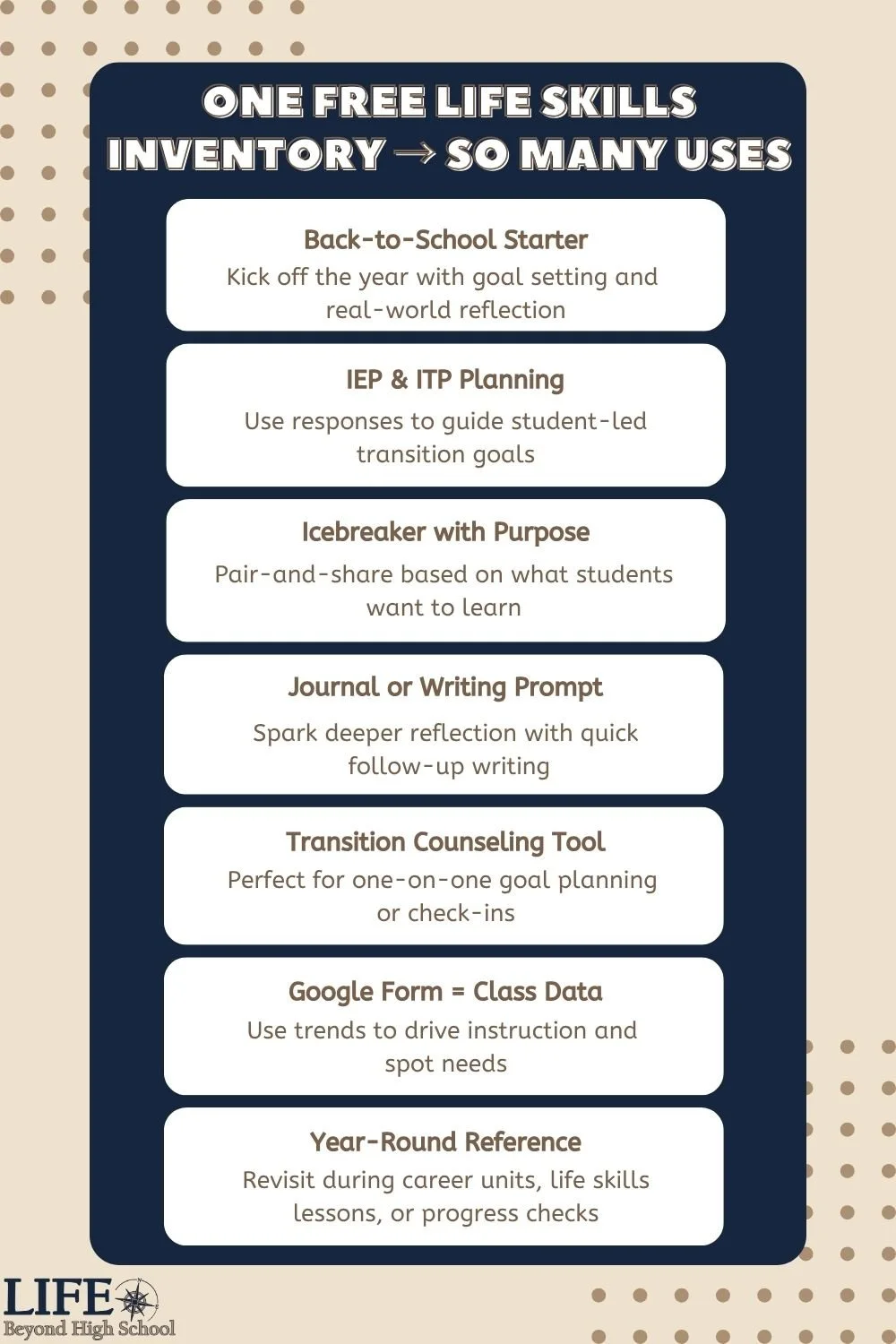Free Life Skills Inventory to Kickstart Real-World Learning
Did you know?
Students who take part in meaningful transition planning are more likely to pursue postsecondary education, find employment, and live independently after high school. According to research from the National Technical Assistance Center on Transition, activities like self-assessment and goal setting improve post-school outcomes, especially for students with disabilities.
As you get ready for back-to-school season, you’re probably thinking about icebreakers, pre-tests, and how you’re going to remember 100 new names. But what if you could start the year with an activity that not only helps you get to know your students, but also helps them get to know themselves?
Inventory includes interests for postsecondary education, employment, and independent living!
Why I Created This Life Skills Inventory
As a special education teacher, I needed a way to assess students for their ITPs (Individual Transition Plans). But the tools I found often felt either too basic or too young. I wanted something age-appropriate. Something that focused on real-world adulting skills and that aligned with the three parts of the transition plan: education, employment, and independent living.
So I created the Adulting 101: Knowledge & Skills Inventory. It’s a practical, student-friendly tool to help young adults reflect on what they already know and what they still want to learn about life after high school.
What’s Inside?
This free resource walks students through essential adulting topics, like banking, housing, job applications, education options, and more. It’s not theoretical. It’s not “someday” content. It’s hands-on, real-world, let’s-talk-about-utilities-and-paychecks kind of stuff.
It comes with:
A printable adulting skills inventory
An editable version where you can add or remove items to fit your students and your needs
A ready-to-use Google Forms version. You’ll get your own copy so you can make edits, collect student responses, and identify trends. Does everyone want to learn how to do laundry? Then that might make a fun brain-break discussion activity one day. Is it just Elizabeth who's wondering about the FAFSA? Maybe she needs a one-on-one with the school counselor.
✅ Get your free copy of the Adulting 101: Knowledge & Skills Inventory now!
Print and Google Forms versions, plus the option to look at class-wide data.
When and How to Use This Activity
Back-to-School: Start the Year with Purpose
Use it during the first week of school to:
Get to know what students are interested in
Set the stage for future lessons or IEP planning
Build buy-in by starting with their priorities
💡 Pro tip: After students complete the inventory, have them think-pair-share or debrief as a group. This helps clarify their thinking and keeps them from checking every box (or none at all).
Reflection + Discussion
Follow up with:
A journal reflection
A small-group discussion
A simple question like: “What’s one thing you’re excited or nervous to learn about adulting?”
Sample response and teacher guide take the guesswork out of using this inventory.
More Ways to Use This Inventory in the Classroom
Want to make the most of this resource? Here are a few ideas from the trenches:
Icebreaker With Purpose
Pair students up and have them interview each other about one adulting skill they marked. Then have them introduce their partner to the class: “This is Jordan, and she wants to learn how to read a lease before signing it.”
Classwide Data Dive
If you use the Google Form version, tally the top skills your students want to learn and turn it into a bar graph or word cloud. This gives you a student-driven roadmap for your next units.
Mini Project or Research Prompt
Have students choose one skill they want to learn and research it. This can become a poster, slide, or short video. Great for bulletin boards, class presentations, or student-led conferences.
Transition Tuesdays (or any day)
Use a different “top priority” each week as a bell ringer or mini-lesson. This is an easy way to spiral life skills instruction all year long without having to teach a full unit every time.
Have your own creative take on this inventory? I’d love to hear how you’re using it. You can email me at jessica [at] lifebeyondhighschool [dot] com (please excuse the weirdness - trying to avoid getting scraped by bots) and share your ideas!
For Special Education Teachers & School Counselors
This resource is perfect for:
ITP development – Use student responses to shape postsecondary goals
Student-led IEPs – Encourage students to bring their worksheet to their IEP meeting to share their priorities
Transition-focused counseling – Use as a conversation starter for exploring life after high school
Seven ways you can use the life skills inventory to support your students.
But It’s Not Just for Special Education
All students are transitioning to adulthood, whether they have an IEP or not. Even if you teach math, science, or Brit Lit, this is an easy way to infuse real-world learning and increase student engagement. It’s flexible enough to use during advisory, in career units, or even as a writing prompt.
My approach to life skills is simple: start with what students are wondering about. If the buy-in is built in, the learning comes naturally. And then give them practical, in-the-trenches tools. Not hypotheticals, but real skills they’ll use next year, not just ‘someday.’
So, What Comes Next?
Once your students have identified what they want (and need) to learn, it’s time to start teaching it. Here are two of my favorite follow-up resources:
🧭 Student Goal Setting Lesson – Help students take their adulting priorities and turn them into short- and long-term goals they can track.
🛠️ How to Adult: 101 Bite-Sized Life Skills – One life skill per slide, with videos, links, and discussion prompts. Easy to plug in all year long.
Want more ready-to-use tools for transition planning? Check out my full collection here.
Start the Year with Skills That Stick
This life skills inventory takes less than a class period, but it can shape the direction of your whole year. Whether you're prepping for transition meetings or just looking for a meaningful way to connect with students this fall, the Adulting 101: Knowledge & Skills Inventory is ready to go.




